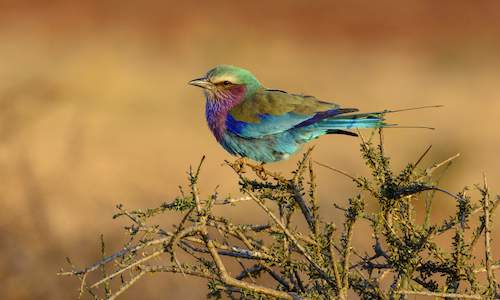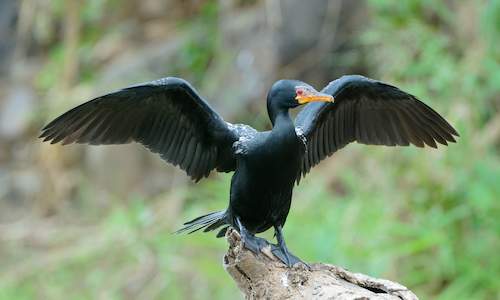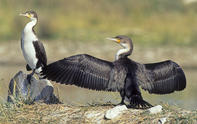
White-breasted Cormorant
White-breasted Cormorant.
Name
White-breasted cormorant (Phalacrocorax carbo)
Family
Phalacrocoracidae
Length
90 cm
Appearance
The adult white-breasted cormorant is identified by the large size, glossy dark brown plumage and white underparts from the throat to the breast. The immature birds are entirely off-white below and are much whiter than the immature reed cormorant.
White-Breasted Cormorant Diet
The white-breasted cormorant in South Africa mainly eats fish and dive in stints of up to about 82 seconds, although considerably less in freshwater. The jaw is adapted to handle bottom-dwelling slow-moving fish, but it may catch faster fish that live closer to the surface. Smaller fish are swallowed underwater, but larger fish has to be taken to shore.
White-Breasted Cormorant Breeding
The white-breasted cormorant breeds throughout the year in South Africa. The peak periods are August or January in the Cape and March to October inland. The nest is built in roughly a week by the female, with material collected by the male. The nest is a flat platform of sticks, twigs and feathers. The female lay 3 - 4, occasionally 5, chalky-white eggs with a greenish-blue tinge when fresh. Incubation is done by both parents.
Habitat
White-breasted cormorants are seen singly or in groups on coastal rocks, islands and estuaries as well as large inland waters where they often perch in dead trees.
White-Breasted Cormorant Status
The white-breasted cormorant is not threatened and is a common resident.
Where they are found
It is found worldwide and in southern Africa it is common in much of South Africa (largely excluding the arid Kalahari), Zimbabwe and central and western Namibia.

SouthAfrica.co.za provides informative, educational content on many South African bird species that orthologists and bird-watchers would enj...
more
Cormorants are often referred to as sea crows because of their black coloration. The family name, Phalacrocoracidae, means bald raven in Gre...
more
